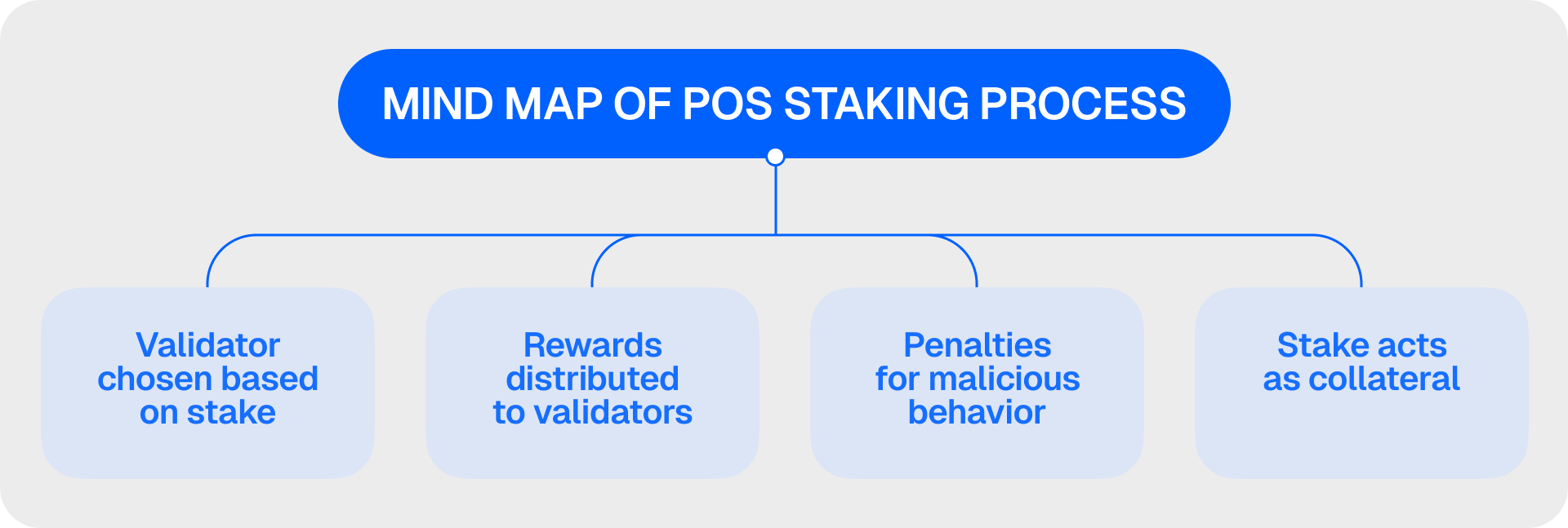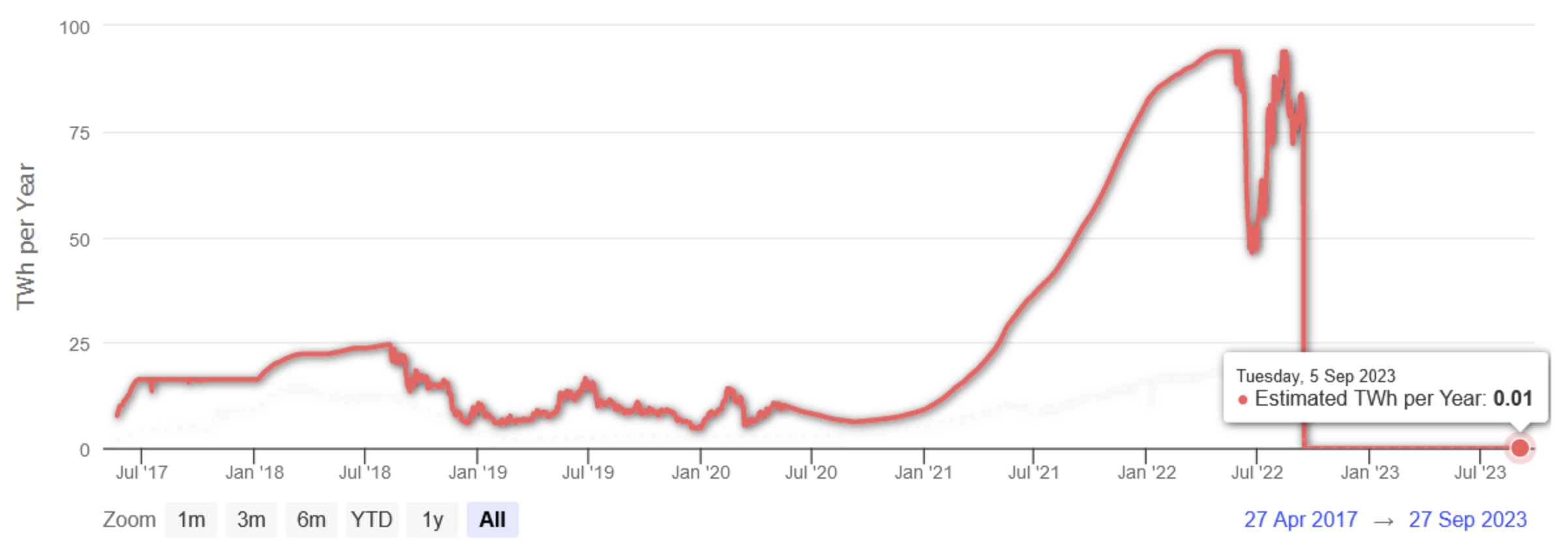Blockchains rely on consensus mechanisms to verify transactions, but why does it matter if a network is proof-of-work (PoW) or proof-of-stake (PoS)? In this guide, we’ll break down PoW vs. PoS in simple terms, explaining how each method ensures blockchain security while addressing the pros and cons and features of each. Here’s what to know in 2025.
KEY TAKEAWAYS
➤ Proof-of-work (PoW) uses energy-intensive mining to secure the network, while proof-of-stake (PoS) relies on validators staking coins, making it more energy-efficient.
➤ PoW is highly secure but faces centralization risks from mining pools, whereas PoS offers faster transactions but can concentrate power among wealthy validators.
➤ PoS is gaining traction due to its lower environmental impact, with Ethereum’s 2022 shift marking a major industry move towards greener blockchain solutions.
What is proof-of-work (PoW)?
Proof-of-work (PoW) is a consensus mechanism where miners use computational power to solve complex mathematical puzzles and validate transactions on a blockchain. The process uses competition between miners to ensure the network is secure and decentralized.
Imagine a massive global race where thousands of people are competing to solve the world’s hardest puzzles. The first person to complete it gets to add their solution to the ledger (the blockchain) and earns a reward. Everyone else has to try again for the next puzzle. This prevents anyone from cheating because it takes real effort and resources to win.
Key characteristics of PoW
- Mining-based validation: Miners compete to solve cryptographic puzzles, with the winner getting to validate a block and receive rewards.
- Energy-intensive: Just like a giant puzzle competition requires energy, PoW uses a lot of computational power, making it energy-intensive.
- Security through difficulty: The complexity of the puzzles makes it very difficult for anyone to tamper with the network. Any changes would require re-solving all previous puzzles, which is practically impossible.
How PoW ensures security and decentralization
PoW provides security by making it extremely costly to try to attack or manipulate the network. The resources needed to cheat are so high that it’s not worth the effort. At the same time, PoW allows anyone with the right hardware to participate in mining, ensuring no single entity controls the network.
Did you know? As of 2025, Bitcoin miners consume more energy annually than some small countries, using approximately 140 terawatt-hours (TWh) of electricity — equivalent to Argentina’s entire energy consumption!
Examples of blockchains using PoW
- Bitcoin: The first cryptocurrency to implement PoW, Bitcoin’s decentralized network relies on miners to secure the blockchain.
- Litecoin: A fork of Bitcoin, Litecoin uses PoW but offers faster transaction times, making it more suitable for smaller, everyday transactions.
What is proof-of-stake (PoS)?
Proof-of-stake (PoS) is a consensus mechanism where validators are chosen to create new blocks based on the amount of cryptocurrency they hold and are willing to “stake” as collateral. This method reduces the need for energy-intensive computations and increases network efficiency.
Think of a raffle where participants buy tickets. The more tickets you buy, the better your chances of being selected as the winner. In PoS, the more coins a validator holds and stakes, the higher their chance of being chosen to validate a block and earn rewards. Unlike PoW, it’s not about solving puzzles — it’s about having skin in the game.
Key characteristics of PoS
- Staking replaces mining: Instead of miners, PoS uses validators who lock up (or stake) their coins for a chance to validate blocks.
- Energy efficiency: Since PoS doesn’t rely on heavy computation, it consumes significantly less energy than PoW.
- Validator selection based on stake: Validators are chosen based on how many coins they have staked, which incentivizes holding and securing the network.
Staking and validator selection process

In PoS, validators lock up a portion of their cryptocurrency as collateral. When selected, they validate new transactions and add them to the blockchain. If they act dishonestly, their staked coins can be slashed (lost), ensuring participants follow the rules. This system favors those who have a large stake but also allows smaller holders to participate.
Fact check: In 2022, Ethereum, the second-largest cryptocurrency by market cap, transitioned from PoW to PoS, reducing its energy consumption by more than 99%. This shift, called “The Merge,” was one of the most anticipated events in crypto history.
Examples of blockchains using PoS
- Cardano: A leading PoS blockchain known for its research-driven approach, Cardano emphasizes security and sustainability through staking.
- Ethereum: After its transition from PoW in 2022, Ethereum now uses PoS, greatly increasing its energy efficiency and scalability.
Proof-of-work vs. proof-of-stake: Comparison

While the differences can always be detailed, here is a quick table for your reference, which might help you make better sense of how each works:
| Feature | Proof-of-work (PoW) | Proof-of-stake (PoS) |
| Energy consumption | High | Low |
| Transaction speed | Slower | Faster |
| Security | Highly secure, but risks centralization in mining pools | Secure, but risks centralization if wealth is concentrated. |
| Economic model | Mining-based rewards | Staking-based rewards |
Think of PoW like a marathon where participants must physically run to the finish line. The fastest runner wins. On the other hand, PoS is more like a lottery: the more tickets you buy (or the more coins you stake), the higher your chances of winning. Both methods get the job done, but one requires more physical effort, while the other relies on participation and luck.
Challenges associated with PoW
While proof-of-work (PoW) is widely recognized for its security and decentralization, it comes with significant challenges. Its energy consumption, centralization risks, and slow transaction speeds pose limitations for scalability.
Say you are running a factory that needs immense amounts of electricity to operate. Every hour, the cost of keeping the lights on increases, and fewer factories can afford to stay in business. Over time, only the biggest companies (or miners, in this case) can keep up, leading to centralization.
High energy consumption
One of PoW’s most talked-about drawbacks is its environmental impact. The energy required to solve cryptographic puzzles is massive, leading to concerns about sustainability. This has prompted debates about greener alternatives in blockchain technology.
SponsoredBitcoin’s enormous transactional, trust, and security advantages are offset by the actively resource-intensive design of its transaction verification process, which now compromises our ability to survive in a climate-dependent world.
Truby, J. (2018). Decarbonizing Bitcoin: Science Direct
Did you know? Bitcoin’s mining energy consumption in 2024 surpassed the annual electricity usage of entire countries like the Netherlands, fueling concerns about its long-term sustainability.
The chart below demonstrates the change in Ethereum’s energy consumption after moving from a PoW consensus mechanism to PoS.

Centralization risks due to mining pools
As mining becomes more competitive and hardware-intensive, smaller miners struggle to compete. This has led to the rise of mining pools — groups of miners who combine their resources to solve puzzles together.
While this makes mining more efficient, it also risks centralizing power in the hands of a few large pools, which could undermine the decentralization principle of PoW.
Slower transaction times
PoW networks like Bitcoin process transactions at a slower pace compared to newer consensus mechanisms. As miners need time to solve each puzzle, block generation can take longer, causing delays in transaction validation, especially during periods of high network traffic.
Challenges associated with PoS
Proof-of-stake (PoS) is praised for being energy-efficient and scalable, but it faces its own set of challenges. These include:
- Risks of centralization
- Potential security vulnerabilities
- The complexity of staking
Think of PoS as a board game where players need to invest money (stake) to get a seat at the table. While this allows more participants than PoW, over time, the richest players have more influence, which could lead to some dominating the game.
Risks of centralization due to wealth concentration
In PoS systems, validators with larger amounts of staked cryptocurrency have a higher chance of being selected to validate blocks. This can lead to a situation where a small group of wealthy participants controls a significant portion of the network, raising concerns about centralization.
Did you know? In 2023, Cardano introduced a system that allows smaller holders to pool their stakes and share rewards, helping reduce centralization risks in PoS systems. This development encourages broader participation, but wealth concentration remains a concern.
Security concerns (long-range attacks, slashing risks)
While PoS is generally considered secure, it has its own vulnerabilities. One such risk is a long-range attack, where an attacker rewrites history from far back in the blockchain.
To mitigate this, PoS systems implement penalties (slashing) for validators who act dishonestly. However, honest validators might be penalized by accident, leading to the potential loss of staked coins.
Complexity of the staking process
Staking can be a complicated process, especially for beginners. Validators need to understand how much to stake, manage the risks of slashing, and stay online to maintain their role in the network.
This complexity may discourage smaller holders from participating, potentially leaving the system in the hands of more experienced or wealthier users.
As of 2025, several hybrid models are being explored, combining aspects of both PoW and PoS. For example, projects like Kadena use PoW for security and PoS for governance to strike a balance between security and energy efficiency.
Which consensus is better: PoS or PoW?
There isn’t a clear winner in this proof-of-work vs. proof-of-stake discussion; each has its strengths and weaknesses depending on the use case. However, as blockchain technology matures, PoS is gaining more attention for its energy efficiency, sustainability, and scalability, while PoW remains trusted for its high level of security.
While many new chains seek out greener credentials with PoS, the status of the original and most popular blockchain, Bitcoin, as PoW ensures that the more energy-intensive consensus mechanism will remain as relevant in the long term.

